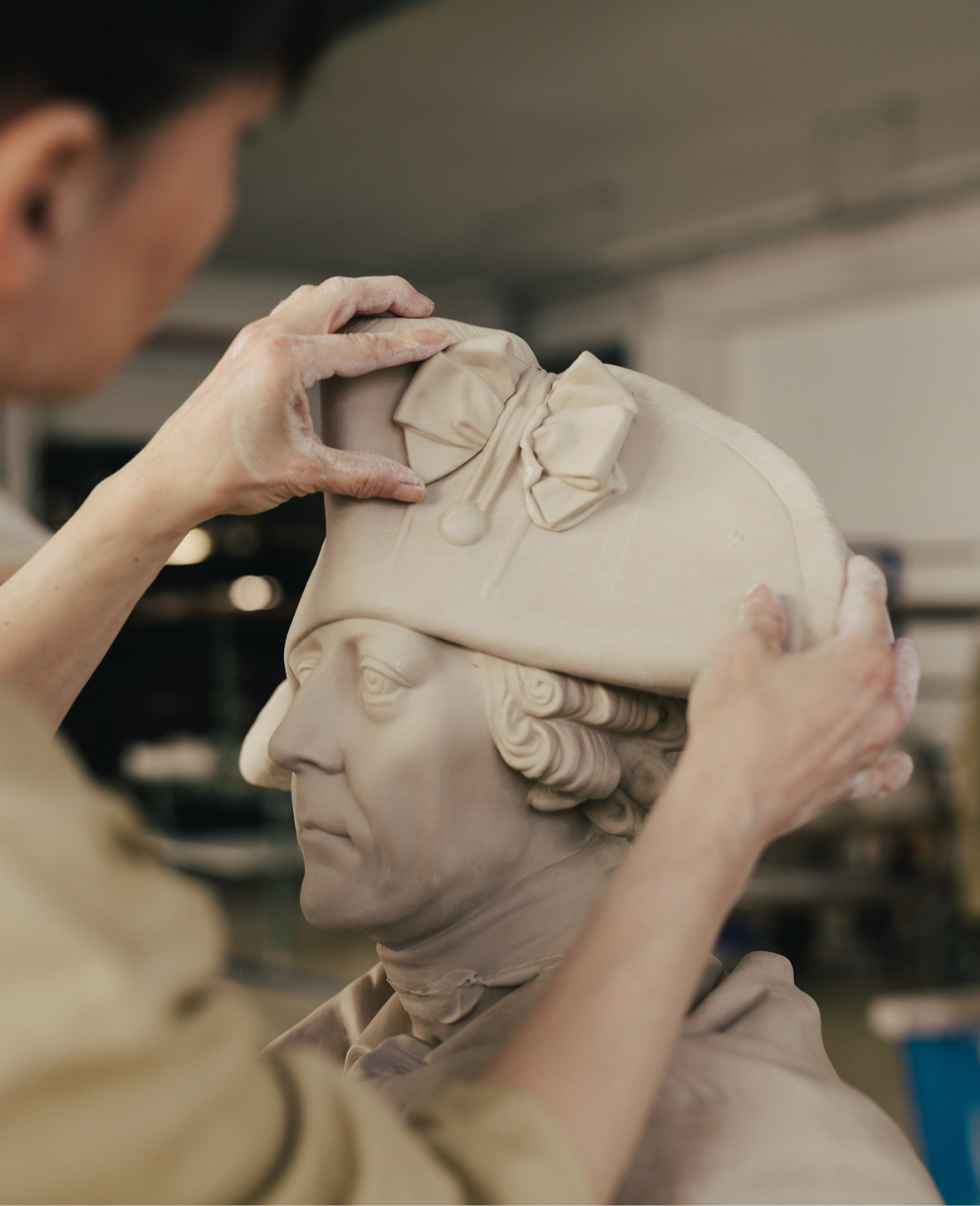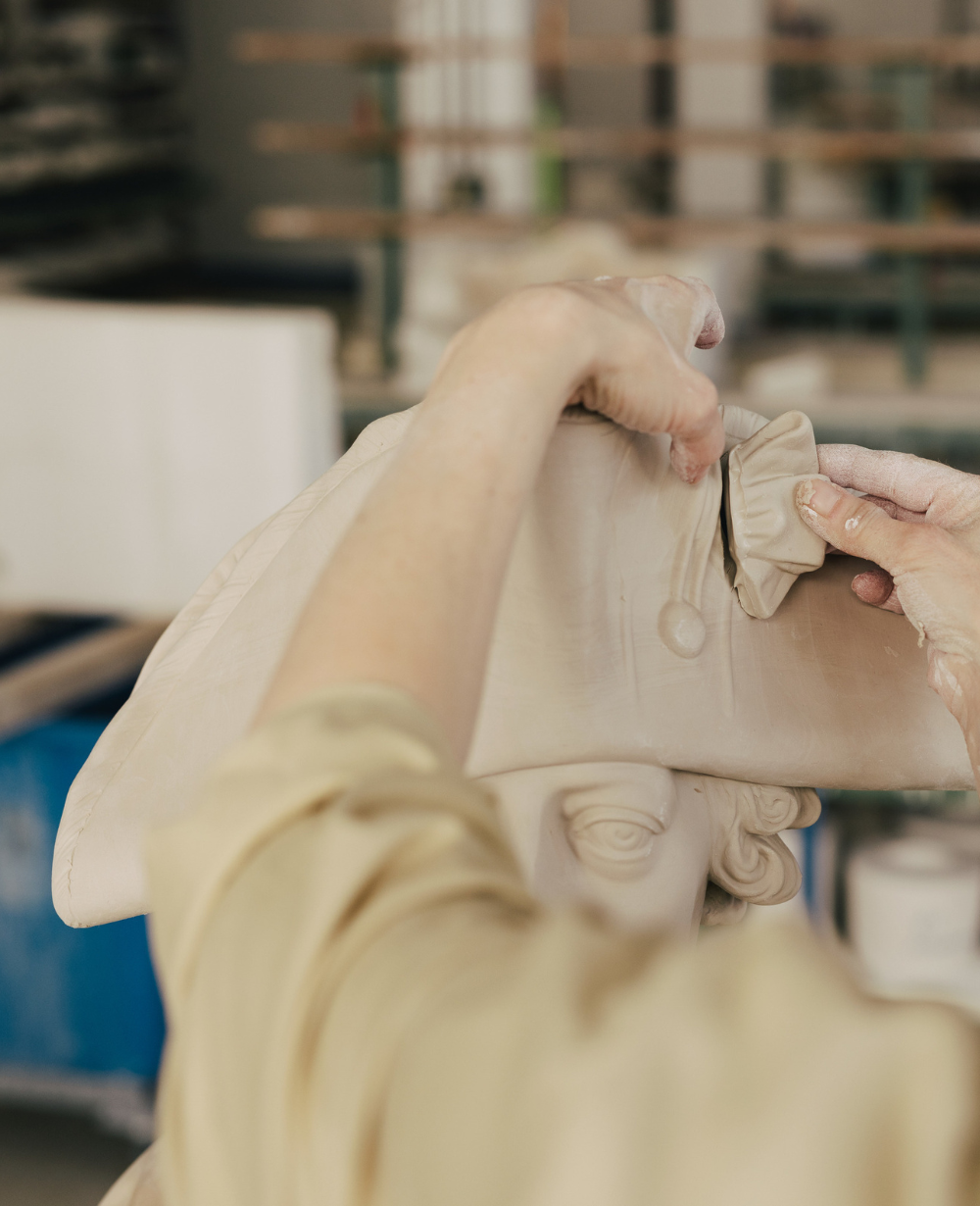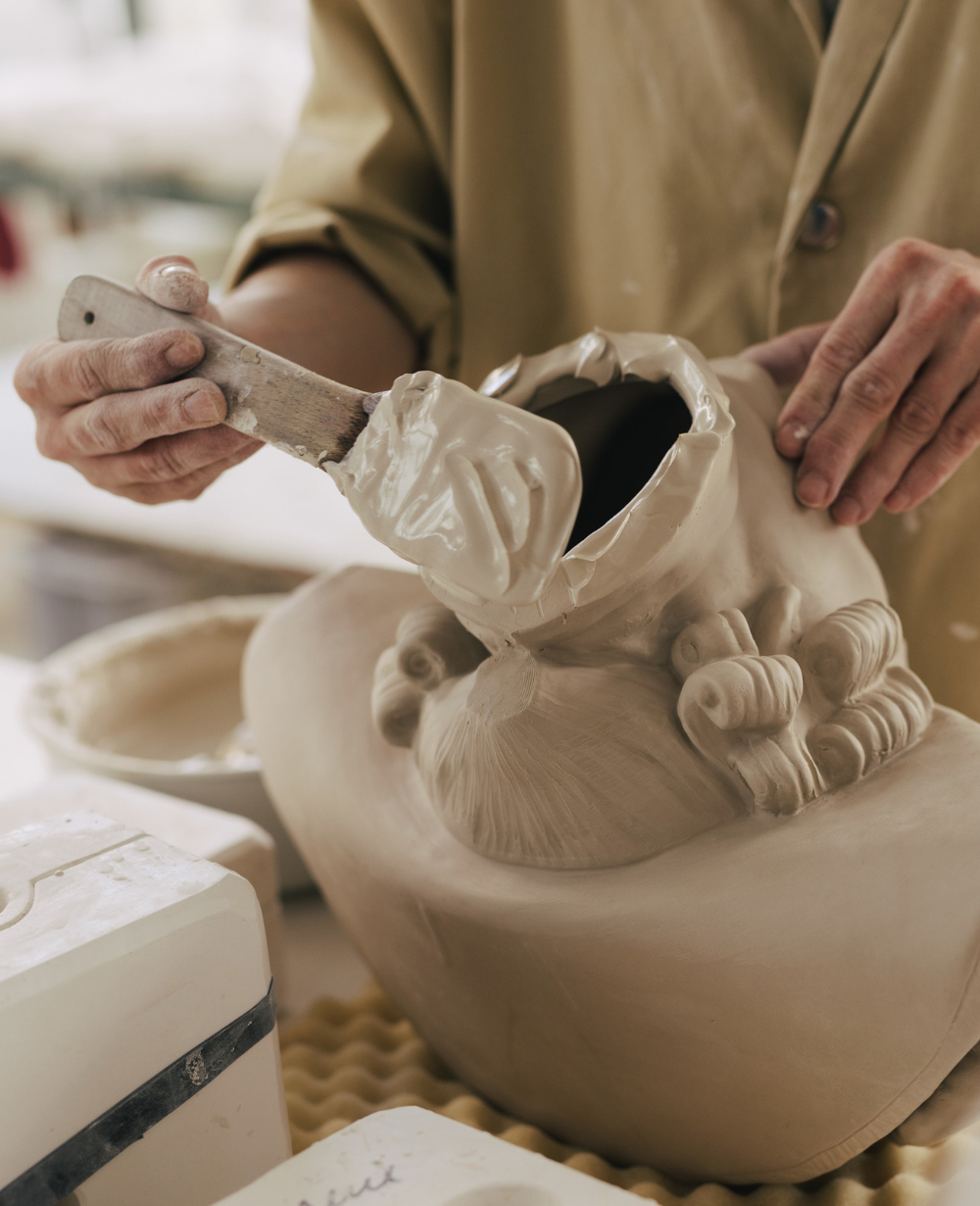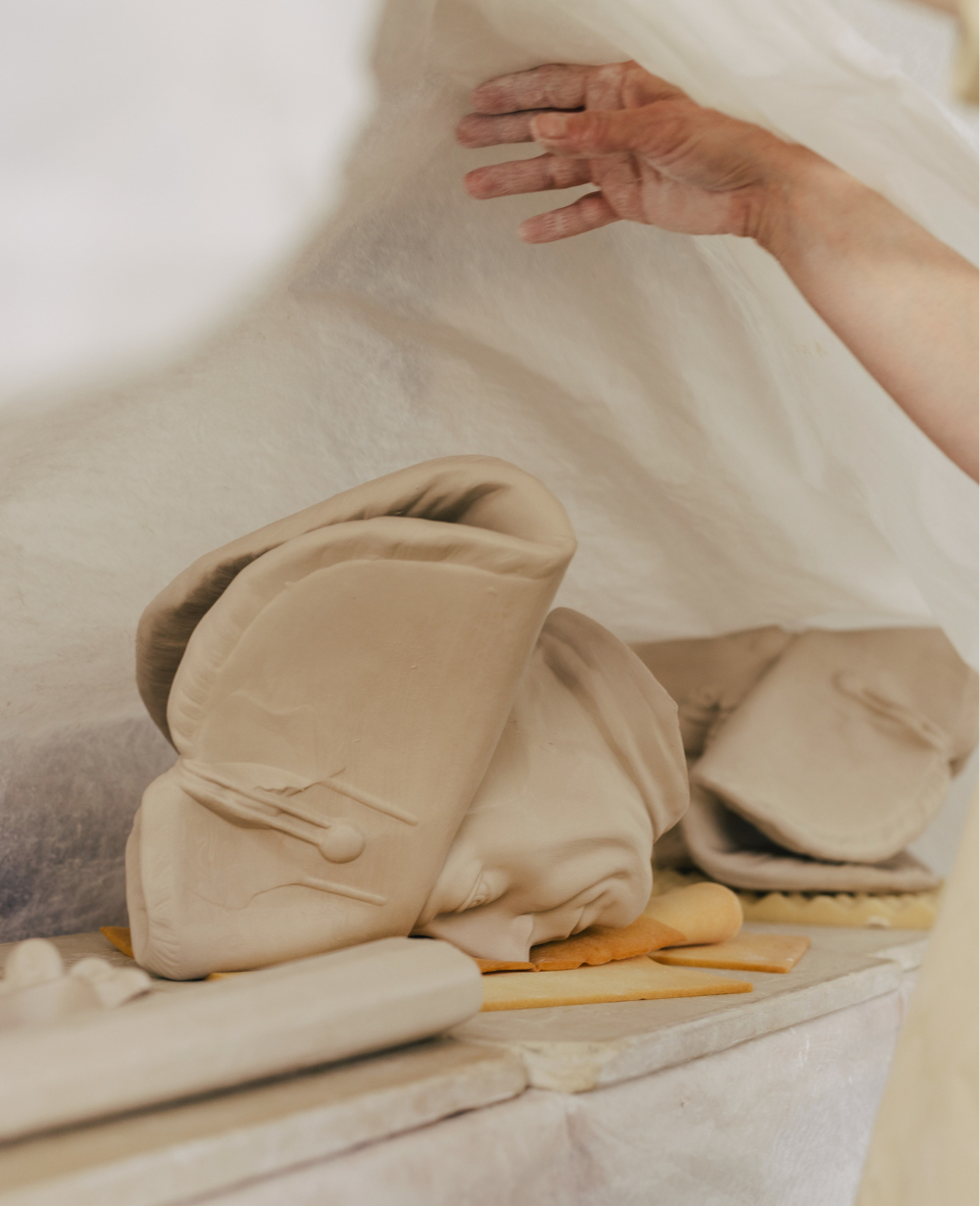In 1851, the 45 cm high portrait bust of Frederick II. was made in porcelain at the Royal Porcelain Manufactory in Berlin as a detail of an equestrian statue based on a design by Christian Daniel Rauch. On May 31, 1851, the almost 14-metre-high bronze statue of Frederick II. on horseback, which the sculptor Christian Daniel Rauch had spent 10 years creating, was ceremoniously unveiled in the avenue Unter den Linden. At the very spot steeped in history where Electress Doro
Show moreHistory
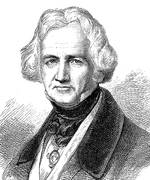
The bust shows a detail of the famous equestrian statue of Frederick the Great, which was erected on Berlin's main boulevard Unter den Linden in 1851. The tricorn hat, officer's jacket, officer's jacket and ermine coat lend dignity and grandeur to the portrait of the king.
Product details
Product description
Product description
In 1851, the 45 cm high portrait bust of Frederick II. was made in porcelain at the Königliche Porzellan-Manufaktur Berlin as a detail of an equestrian statue based on a design by Christian Daniel Rauch.
On May 31, 1851, the almost 14-metre-high bronze statue of Frederick II. on horseback, created by the sculptor Christian Daniel Rauch over a period of 10 years, was ceremoniously unveiled in the avenue Unter den Linden. 65 years after the death of Frederick the Great, his equestrian statue was erected on the very spot steeped in history where Electress Dorothea is said to have planted the first lime tree and where the triumphal gate stood when the young Queen Luise entered Berlin. It was commissioned by the Prussian King Frederick William IV and was the highlight of Rauch's artistic work. In addition to being honored by the king, Rauch also received diplomas and honorary doctorates from the universities of Berlin and Halle , and a celebration was held for him with 230 invited guests.
The porcelain bust of FRIEDRICH II. is still made by hand today at the historic manufactory site in Berlin's Tiergarten. Frederick the Great was not only important to the Berlin Porcelain Manufactory as a Prussian king and general, but also as its owner and founder when he acquired the manufactory in 1763. Until his death in 1786, he managed the fortunes of the company with great personal commitment. He himself ordered 21 richly decorated dinner services to furnish his palaces. Porcelain was also an important instrument of his politics and diplomacy as a gift from the state. He awarded the porcelain manufactory the title "royal" and gave it the sceptre from the Electorate of Brandenburg's coat of arms as a trademark that is still used today.

